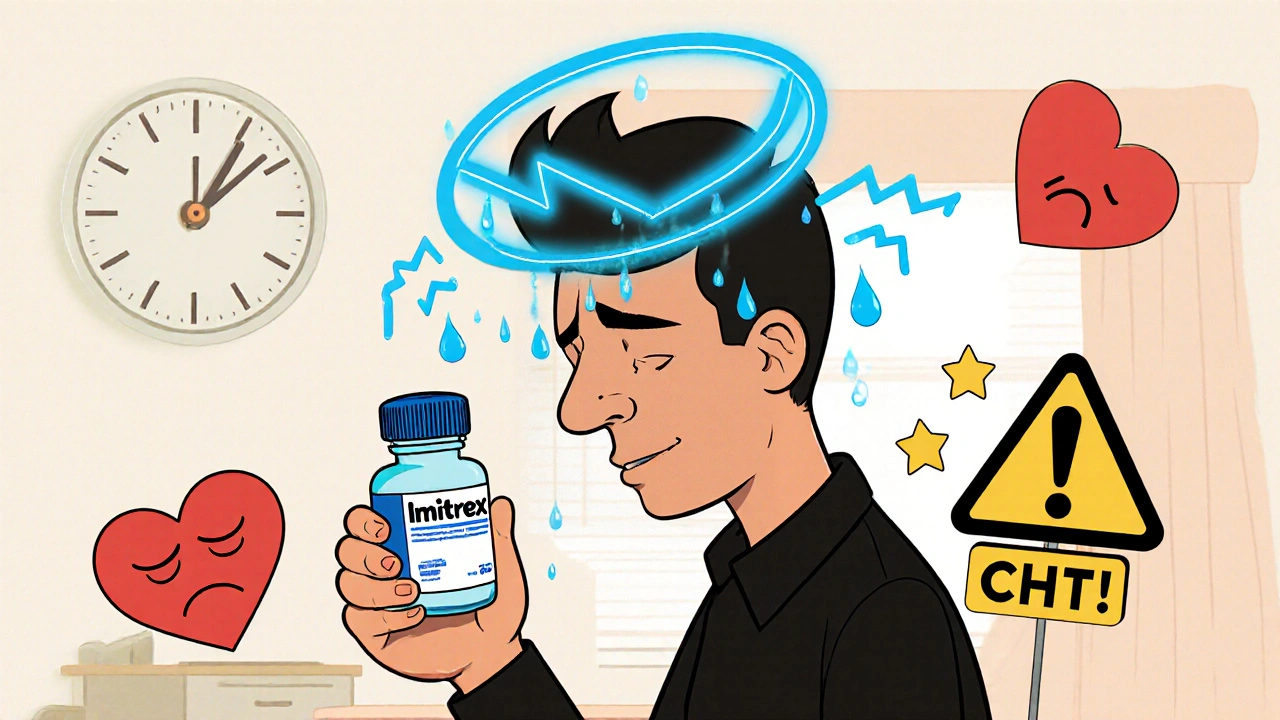Imitrex (sumatriptan) helps many with migraines, but it doesn't work for everyone. Discover effective alternatives like other triptans, CGRP blockers, and combination therapies that offer relief without the side effects.
Sumatriptan: What It Is, How It Works, and What You Need to Know
When a migraine hits hard, Sumatriptan, a targeted medication used to stop migraine attacks by narrowing blood vessels around the brain and blocking pain pathways. Also known as a triptan, it’s one of the most prescribed drugs for acute migraine relief—fast, effective, and designed for use when symptoms start. Unlike painkillers that just dull the pain, Sumatriptan acts on the root cause: the abnormal brain activity and swollen blood vessels that trigger migraines.
It’s not a daily preventive pill. It’s your emergency tool. You take it at the first sign of a migraine—throbbing pain, light sensitivity, nausea—and it often stops the attack before it fully takes over. Many people find relief within 30 minutes. But it doesn’t work for everyone, and it’s not meant for tension headaches or regular daily aches. If you’ve tried ibuprofen or acetaminophen and nothing helps, Sumatriptan might be your next step.
It’s part of a bigger group called triptan medications, a class of drugs specifically developed for migraine treatment, including rizatriptan, eletriptan, and zolmitriptan. Each has slight differences in how fast they work, how long they last, and how they’re taken (pill, nasal spray, injection). Sumatriptan was the first, and it’s still the most studied. But if one triptan doesn’t help, another might. It’s not a one-size-fits-all solution. People with heart disease, high blood pressure, or a history of stroke should avoid it. That’s why doctors ask about your medical history before prescribing it. It’s powerful, but not for everyone.
What you’ll find in the posts below isn’t just about Sumatriptan alone. You’ll see how it fits into real-life treatment plans, what side effects people actually experience, how it compares to other migraine drugs, and why some patients switch between options. You’ll also find insights on how these drugs interact with other medications, what to do if they stop working, and how to tell if your headaches are truly migraines—or something else. This isn’t theoretical. These are real experiences from people who’ve been there—trying different doses, dealing with nausea after taking it, wondering if the injection is worth the sting, or debating whether to stick with pills or try the nasal spray.
If you’re looking for answers about Sumatriptan—whether you’re just starting out, have been using it for years, or are considering alternatives—you’ll find practical, no-fluff advice here. No marketing hype. Just what works, what doesn’t, and what you need to watch out for.

